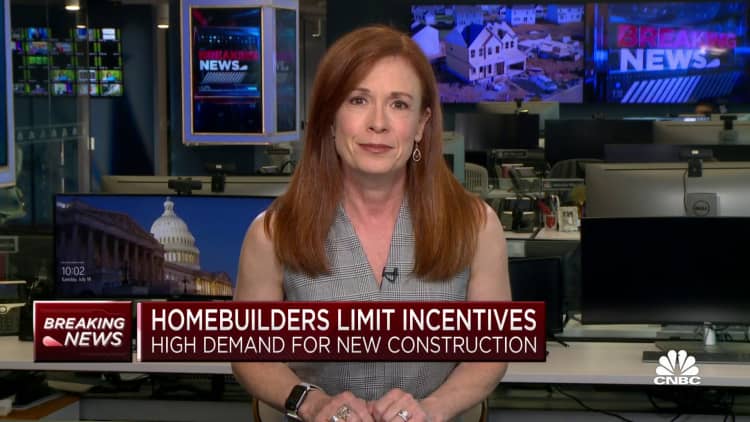
Builder sentiment in the market for single-family homes rose 1 point in July to 56, according to the National Association of Home Builders/Wells Fargo Housing Market Index.
It marks the seventh straight month of gains and the highest level since June 2022. A reading above 50 is considered positive sentiment.
Builders say low supply in the resale market is driving demand for new construction, but higher mortgage rates and supply-side challenges continue to put pressure on the market.
“Although builders continue to remain cautiously optimistic about market conditions, the quarter-point rise in mortgage rates over the past month is a stark reminder of the stop and start process the market will experience as the Federal Reserve nears the end of the ongoing tightening cycle,” said Robert Dietz, NAHB’s chief economist.
The average rate on the popular 30-year fixed mortgage crossed over 7% briefly in May and then again at the end of June. It has only come down slightly in the last week. Those higher rates are straining affordability in the market, where prices for existing homes are rising yet again.
Of the NAHB index’s three components, current sales conditions in July rose 1 point to 62; buyer traffic increased 3 points to 40, the highest reading since June of last year; and sales expectations in the next six months fell 2 points to 60. The drop in expectations is due to that jump in interest rates and the resulting hit to affordability.
Despite higher mortgage rates, however, builders are using fewer incentives. Just 22% of builders reported cutting prices in July. This is down from 25% in June and 27% in May.
Sales of newly built homes in May, the latest reading available, jumped 13% compared with April and were 20% higher than May 2022, according to the U.S. Census Bureau. The median price was down over 7% from May of last year, but that median may be skewed by the mix of homes selling, which is currently leaning toward the lower end.

